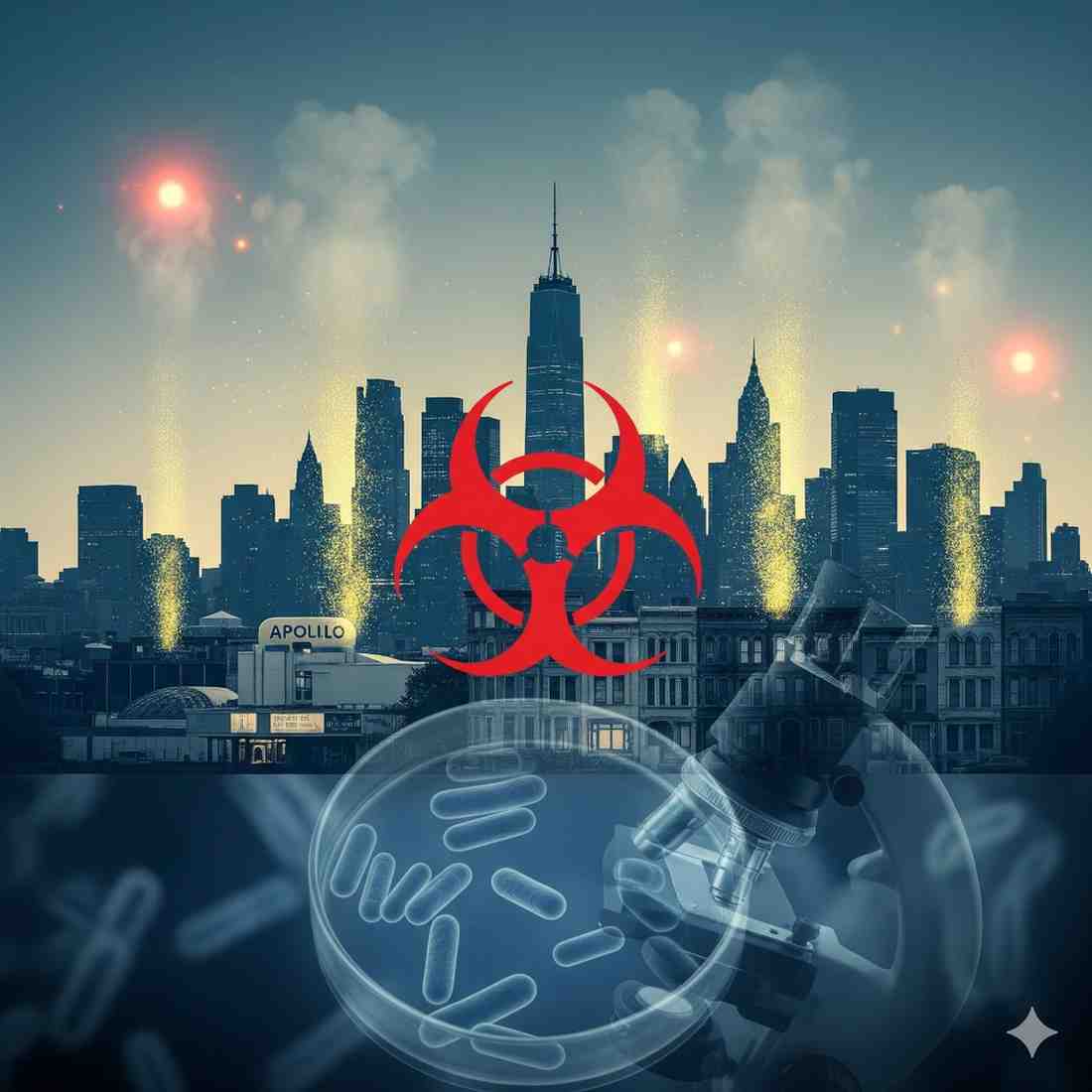Great Health Great Fitness
Legionnaires’ Disease Outbreak in New York City Claims Third Life: Health Officials Intensify Investigation

New York City, October 19, 2025 — A serious outbreak of Legionnaires’ disease has struck New York City, leaving three people dead and over 70 others infected since late July. The outbreak, concentrated primarily in Harlem and surrounding areas, has prompted urgent action from city health officials as they race to identify the exact source of the infection and prevent further spread.
A Worrying Rise in Cases
According to the New York City Department of Health and Mental Hygiene (DOHMH), the first cluster of Legionnaires’ cases was reported in late July. Initially dismissed as a small, contained incident, the number of infections has since risen dramatically. Health investigators confirmed that more than 70 cases have now been reported across multiple boroughs, with a heavy concentration in Harlem.
City Health Commissioner Dr. Ashwin Vasan stated, “We are deeply concerned about the rise in Legionnaires’ cases. The Department is working around the clock to trace the origin of this outbreak and ensure all contaminated systems are identified and treated immediately.”
Understanding Legionnaires’ Disease
Legionnaires’ disease is a severe form of pneumonia caused by the Legionella bacteria. These bacteria thrive in warm water environments — such as cooling towers, plumbing systems, hot tubs, and decorative fountains — and can infect humans when tiny droplets of contaminated water are inhaled.
Unlike many other infectious diseases, Legionnaires’ does not spread from person to person. Instead, outbreaks usually occur when water systems become contaminated and release bacteria into the air.
Typical symptoms include:
- High fever and chills
- Cough and shortness of breath
- Muscle aches and fatigue
- Chest pain and confusion
The illness can be life-threatening, particularly for older adults, smokers, or individuals with weakened immune systems.
Possible Sources Under Investigation
Environmental health teams from the DOHMH and the Centers for Disease Control and Prevention (CDC) are testing multiple cooling towers and water systems in the affected neighborhoods. Early evidence suggests that a cluster of contaminated cooling towers may be the source, though lab testing is still ongoing.
City officials have already ordered the disinfection of more than 50 cooling towers as a preventive measure. Inspectors have also been dispatched to test hotels, apartment complexes, and public facilities for possible bacterial growth.
Dr. Vasan explained, “We are prioritizing inspections in Harlem and adjacent boroughs. Our teams are taking water samples and conducting immediate cleaning wherever contamination is found.”
The Human Toll
Among the 70 reported cases, three patients — all over the age of 60 — have died due to complications linked to pneumonia caused by the Legionella bacteria. Most of the other patients have been hospitalized, with several still receiving intensive care.
Local resident Cynthia Brooks, 64, shared her experience: “It started like a regular flu — fever, fatigue, and chills. But within days, I couldn’t breathe properly. I’m just thankful the hospital diagnosed it early.”
Public health officials have urged hospitals across the city to remain vigilant for pneumonia-like cases, especially when typical antibiotics fail to work quickly.
Health Officials Urge Caution
The DOHMH is advising residents to seek medical care immediately if they experience flu-like symptoms lasting more than 48 hours, especially if they live or work near the affected areas.
Residents are also being advised to:
- Avoid direct exposure to mist or water vapor from public fountains, cooling units, or large air conditioners.
- Ensure building owners and landlords follow city regulations for cooling tower maintenance.
- Stay hydrated and monitor health symptoms closely, especially if they have existing respiratory conditions.
City’s Response and Next Steps
New York City has a history of Legionnaires’ outbreaks, including a major one in 2015 in the Bronx that infected 138 people and killed 16. Since then, city laws have required routine testing and cleaning of cooling towers, but compliance has sometimes been inconsistent.
In response to the current crisis, Mayor Eric Adams has announced a citywide inspection initiative, directing building owners to provide immediate proof of Legionella testing or risk heavy fines.
A city statement said, “Public safety is our top priority. We are enforcing strict water management and disinfection procedures to prevent further infections.”
Meanwhile, CDC epidemiologists are assisting in tracking genetic markers of the Legionella strain to pinpoint whether all cases originated from a single contaminated source or multiple smaller outbreaks.
Public Health Outlook
While health officials are confident that the outbreak can be contained, they warn that urban environments with aging infrastructure remain vulnerable to such bacterial infections. Legionnaires’ disease is becoming increasingly recognized as a recurring risk in major cities worldwide — especially where maintenance of water systems is neglected.
Dr. Vasan reassured residents, saying, “We are confident that with aggressive testing, cleaning, and awareness, we can bring this outbreak under control. Our message to New Yorkers is simple — stay alert, not alarmed.”
🔍 Key Facts Summary
- Outbreak Location: Harlem and nearby areas, New York City
- Confirmed Cases: Over 70 since July 25
- Deaths Reported: 3 (elderly patients)
- Suspected Source: Contaminated cooling towers
- Cause: Legionella bacteria (causes severe pneumonia)
- Transmission: Not person-to-person; via inhaling mist from contaminated water
- Prevention: Regular water system cleaning and monitoring
🏥 Final Takeaway
The ongoing Legionnaires’ outbreak in New York City underscores the importance of water system maintenance and urban health vigilance. As the city tightens inspection measures and disinfection efforts, health experts emphasize that public awareness, quick diagnosis, and responsible building management are essential in preventing future tragedies.
